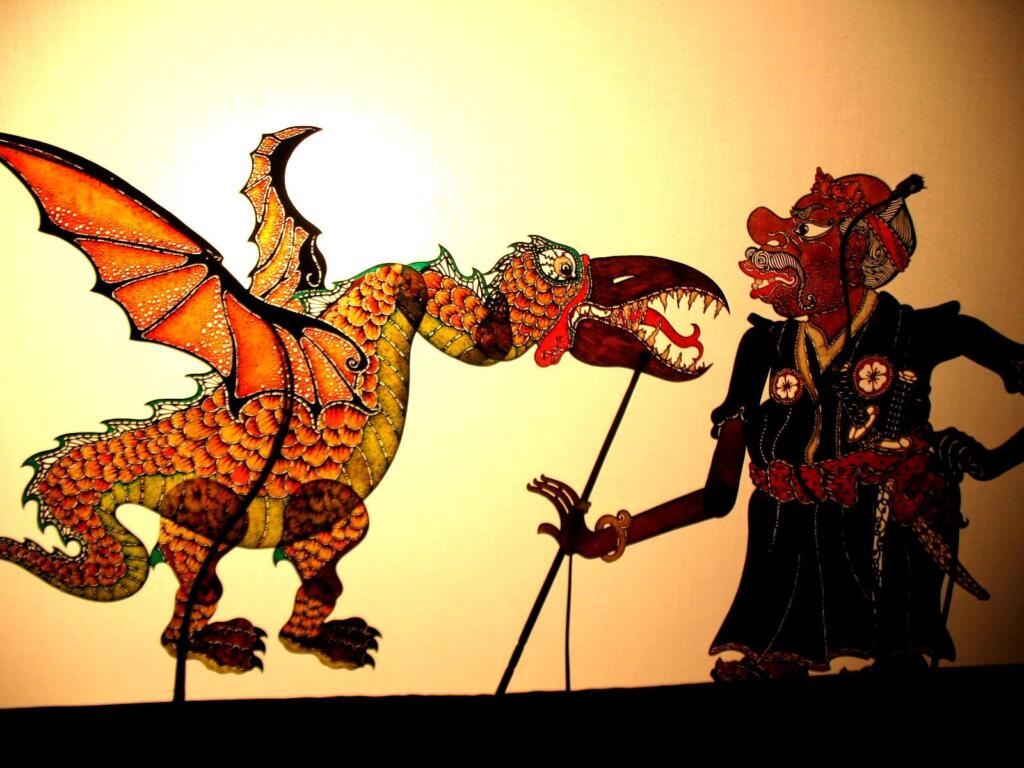
Shadow puppetry is an integral part of India’s culture with different iterations of the form found in various regions of the country. Over centuries, this art form travelled and today it’s performed by artists around the world. One such prolific puppeteer is Michael Richardson, an American with a 40-year career in theatre arts and printmaking. Richardson learnt shadow puppetry or Wayang theatre as it’s called in Indonesia, when he visited the country on a Fulbright Scholarship in 1985. He returned with an eagerness to tell American stories using this traditional South Asian medium. The appeal, as he sees it, is universal: “Shadow puppetry can be called the grandmother of cinema, operating in some of the same ways except it is directly connected to the human being(s) who create the puppets, and make them come alive.”
For his work in puppetry and printmaking—you’ll read more about both in the following interview—Richardson has been the recipient of several awards and fellowships, including multiple Fulbright Fellowships and Artist Fellowships from both the Mississippi and Maryland State Arts Commissions. He’s the founder of the Red String Wayang Theatre and Red String Intaglio Press. In 2018, he began a new project with the Jawaharlal Nehru Architecture and Fine Art University in Hyderabad, which explored making new, non-traditional kalamkaris as works of art. He spent two months in India, learning the basics of kalamkari. Connecting this textile tradition with shadow puppetry and printmaking, he says, “I am deeply attracted to the historical depth and evolved techniques of traditional forms, as well as their rich legacy for inspiration.”
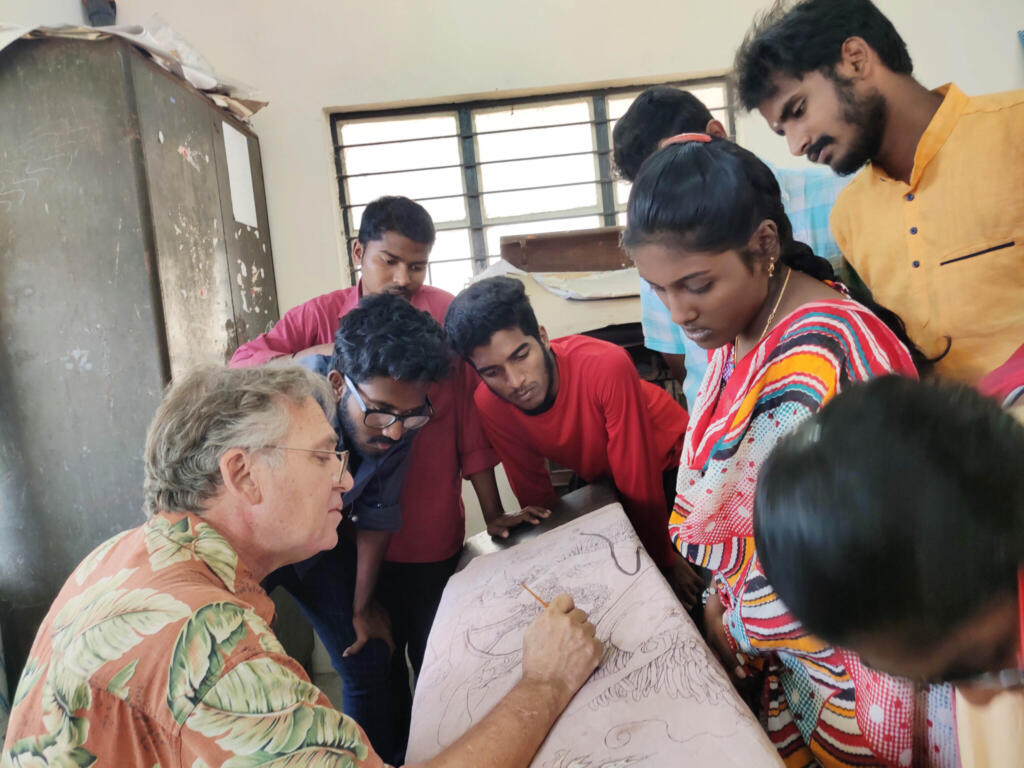
Richardson during his kalamkari project in Hyderabad
We chatted with the Mississippi-based Michael Richardson to understand how these traditional Asian art forms have shaped the stories he tells back home.
What was it about the art of shadow puppetry that appealed to you?
When I first applied to the Fulbright programme back in 1984, I had been performing marionette and rod puppet theatre for seven years already in the USA. After I got to Java, I did not immediately choose shadow puppetry as a direction because it was totally new to me. Indonesia also has a rod puppet tradition that I took an interest in. After a few months, and seeing a few shadow puppet shows, I started connecting to this grand and extraordinary medium, recognising that it was sort of the marriage of puppets as I knew them, and my graphic art (which was the focus of my formal education). The deal was sealed the day I started designing my own shadow puppets, because drawing — whether it be for a print or a shadow puppet pattern or kalamkari — is the “essential skill” of how I make art.
Part of my attraction to shadow puppetry, especially the Javanese format (solo dalang, and puppets/performance method designed to be worked by that solo performer) was based on the fact that I could perform entirely by myself, with a kind of puppetry that is highly transportable. I like working with other people very much but not having to pay assistants or helpers meant the difference as to whether I could earn a living or not from the work. I also understood that shadow puppetry was relatively unknown in the USA at that time, and that this could be an opportunity for me.
I’ve enjoyed the design and visual arts components of making puppets as well as the universe of theatrical skills and creativity that comes with performing. Puppetry became the window that brought me to South Asia, opening the door to what has turned out to be a lifelong fascination with Hindu culture. It also became a window to observe how time has changed the contexts and vitality of traditional arts, over several generations, that is part of a global dialogue.
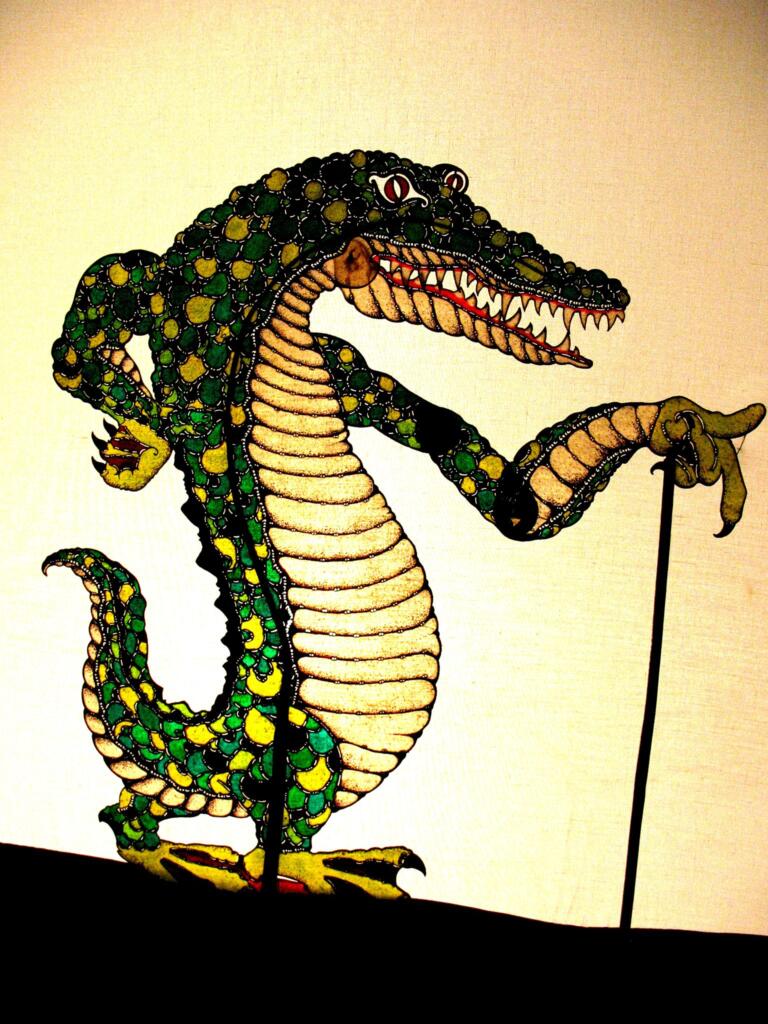
In your work, you have used shadow puppetry to depict contemporary themes and highlight social issues in the USA. What is it about this art form that makes it so universal?
In my opinion, a good shadow puppet is a visual symbol, where complex ideas like personality or character are translated into shape, line, and sometimes colour. I’ve nicknamed it “Graphic Theatre” for that reason. Shadow puppetry can be called the grandmother of cinema, operating in some of the same ways except it is directly connected to the human being(s) who create the puppets, and make them come alive.
One reason I hate videos of shadow puppetry, frankly, is that such videos remove the art from the context it belongs in. Audiences cannot appreciate the strengths of the medium unless they completely understand that it is being performed live by maybe a single human being, in the case of the Indonesian method. Part of the universal appeal that you mention comes from comprehending the context, and thereby, understanding the achievement of the performer or performers to create an interesting show within the limitations of the medium. Seeing the various aspects of design and performance come together, to convey pathos or drama within this traditional form, is awesome to behold.
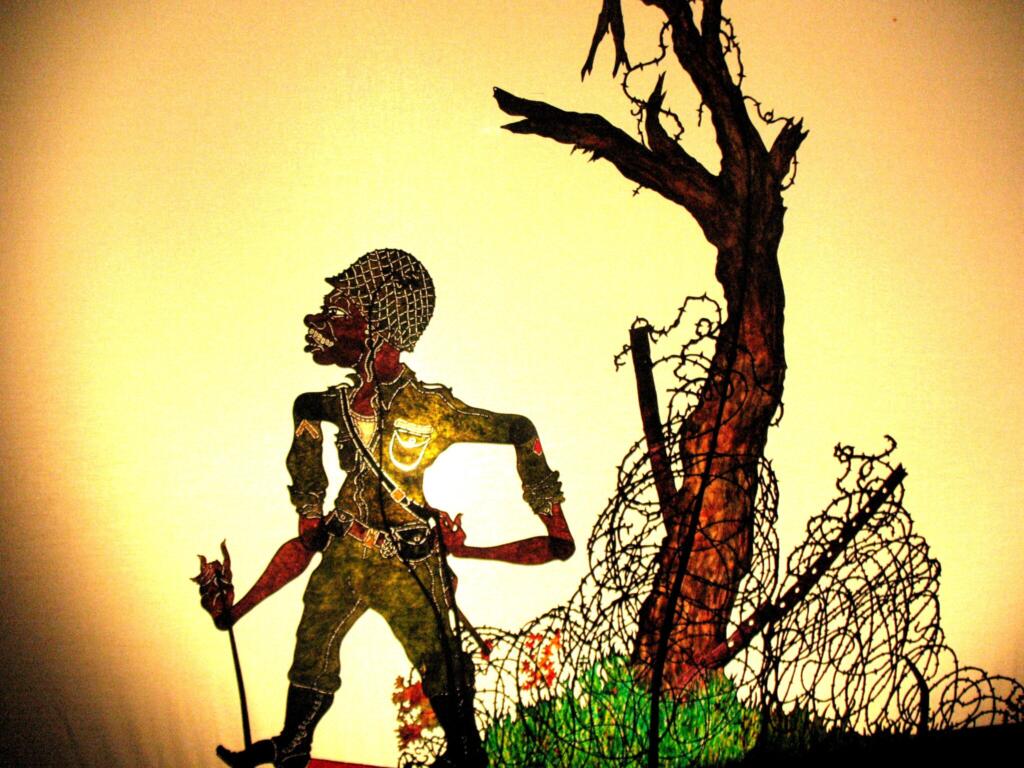
Could you tell us a little bit about the American stories and themes you have tackled through the Wayang style, especially in the show The Struggle For Justice? How has the audience reacted to stories of race being told in this manner?
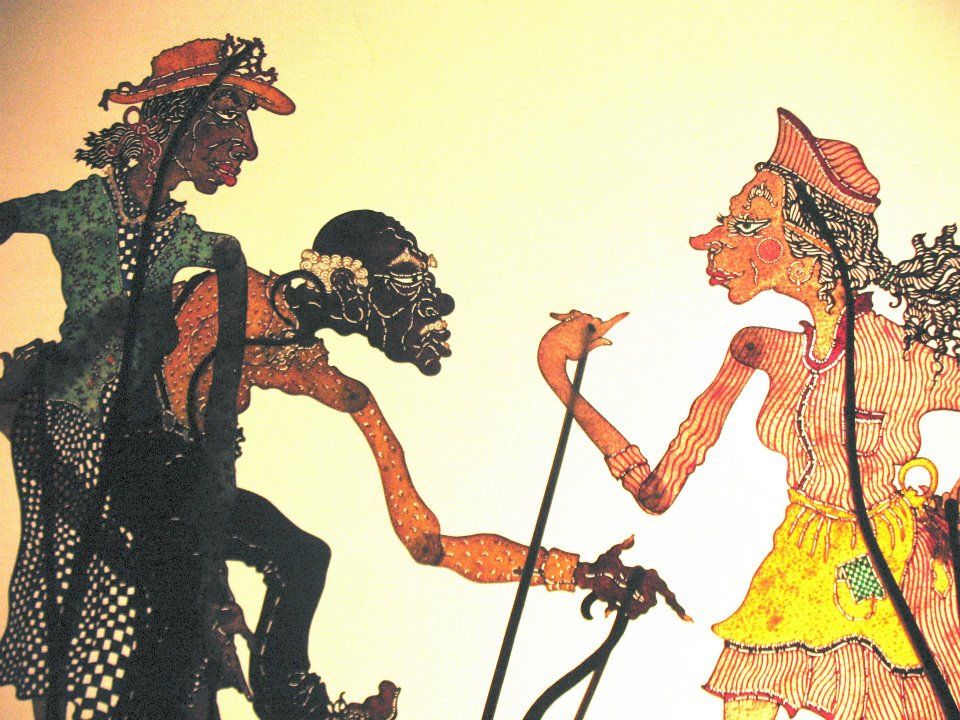
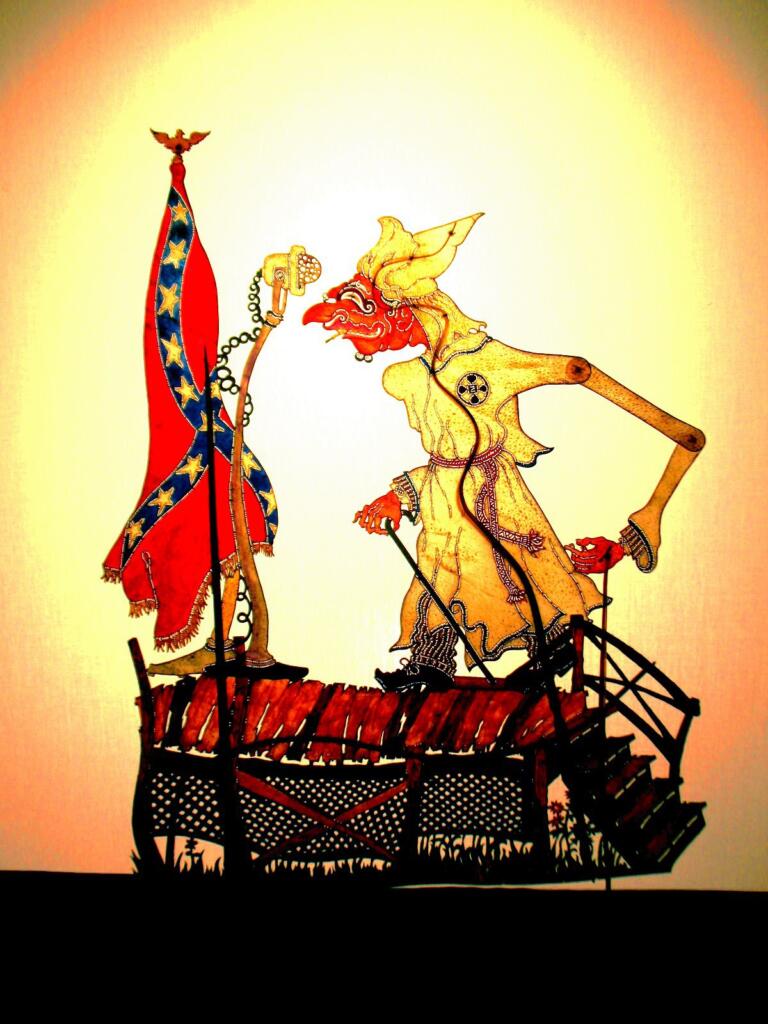
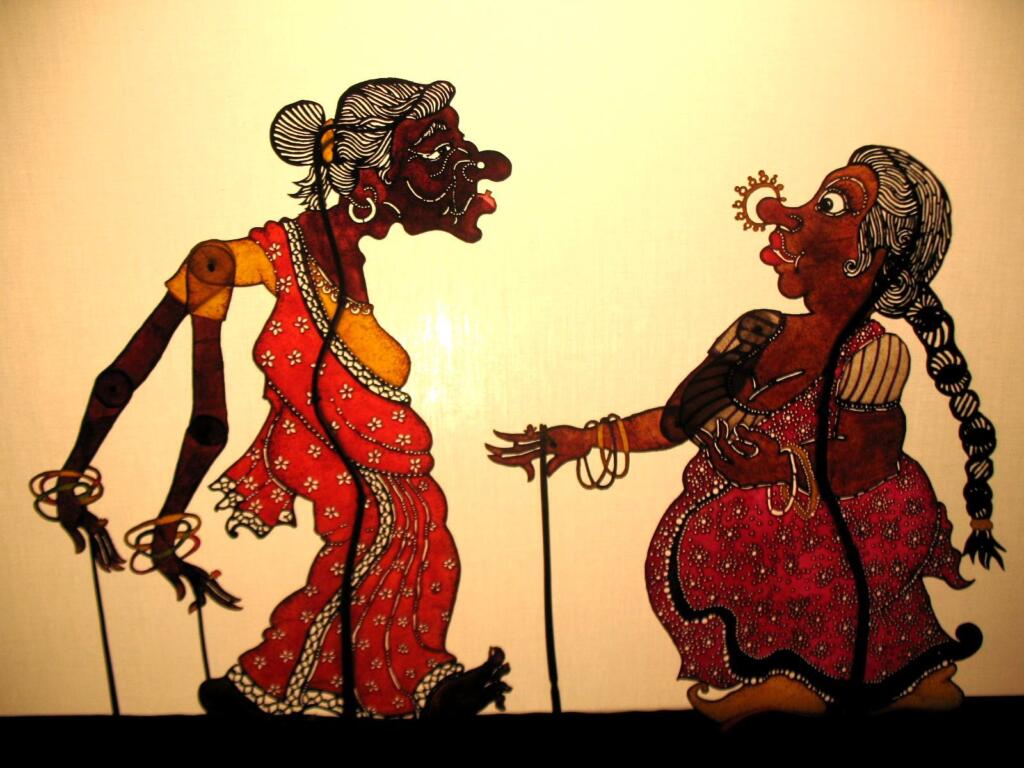
Having watched Wayang and Tholu Bommalaata performances in Indonesia and India respectively, what do you think have been the parallels and the differences between how shadow puppetry is received in the East and the West?
Generally, Western audiences have short attention spans compared to Eastern audiences, who are brought up with the pace of traditional performances. Asian audiences assume that puppetry is an art form equally for adults as much as young people, while American puppetry artists still struggle with the idea that puppetry is all for children. This in spite of much innovative and serious new puppet theater for adults made by dedicated artists in a kind of cultural underground. It goes without saying that mediums like video and film have altered audiences globally in this regard.
All cultures enjoy seeing stories they already know presented at least as much as new, unfamiliar material. I state that from the perspective of a guy who did more than 2,000 shows. I think that may be a key to the medium’s universality again, i.e., shadow puppetry reinforces and enlarges the myths a culture already has, where the audience is contributing subconsciously to the content of the actual performance as it is taking place. India has specific stories she calls her own, as her defining culture and identity. My country, by contrast, is a melting pot, where change is constant.
The field of puppetry in the USA is currently going through a change of context as I see it, moving from what had been a type of travelling entertainer/artist/educator working in schools, shopping malls, festivals, libraries etc. at the start of my career, to a very different future now. Puppetry has played major roles in several relatively recent award winning Broadway productions, and is embedded in other media productions. I continue to believe that puppetry is an exquisite instrument of instruction, and hope that the future brings opportunities again to see artists working in school.
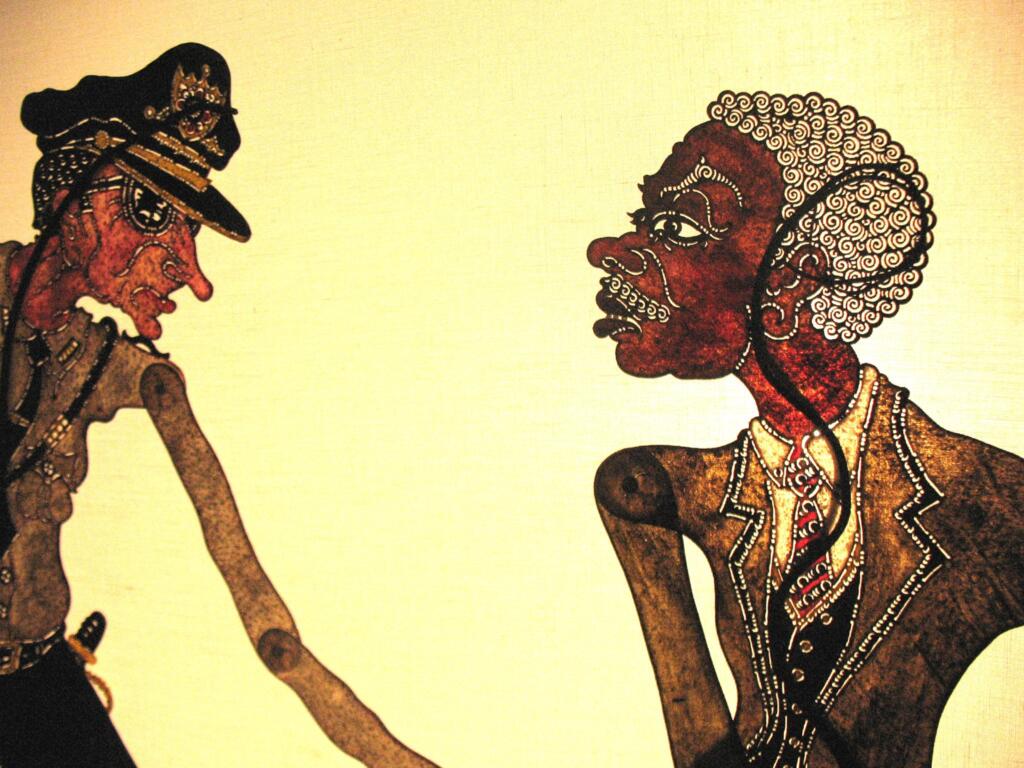
How have your travels and interactions with local artists in these countries influenced your own art? What have been your inspirations?
All I do is steal from Asian artists! Just kidding. We Americans are a new nation that has almost no history at all when compared to the deep and vast culture of India or Indonesia. I cannot overstate the significance of my travels to these places, in giving me a sense of time and history that we simply do not have. Studying these cultures, working with artists there, I see how their art is a continuation of a greater entity. Mind you, I very much enjoy the energy too of the West to keep inventing new things, or go in new directions. But it has to be said that these long established traditional Asian forms gradually build up a density of knowledge, or depth of complexity, which is seldom achieved in a single lifetime.
One of the main aspects I took from Indian shadow puppetry is its use of transparent colouration on its puppets. From the day I made my first puppet in Indonesia, before I ever came to India, I refused to paint them the same way as the Javanese as I did not want my shows to be seen as black and white shadows on a screen.
It could be argued, in my opinion, that painting puppets the way the Javanese do is what caused them to be the very best puppet carvers on the planet, which is why I collaborated with them over a 25-year period to create over 400 new designs from my own pattern drawings. Indian puppets rely less on detailed carving of the leather puppet but vibrant, transparent colour visible through the screen instead.
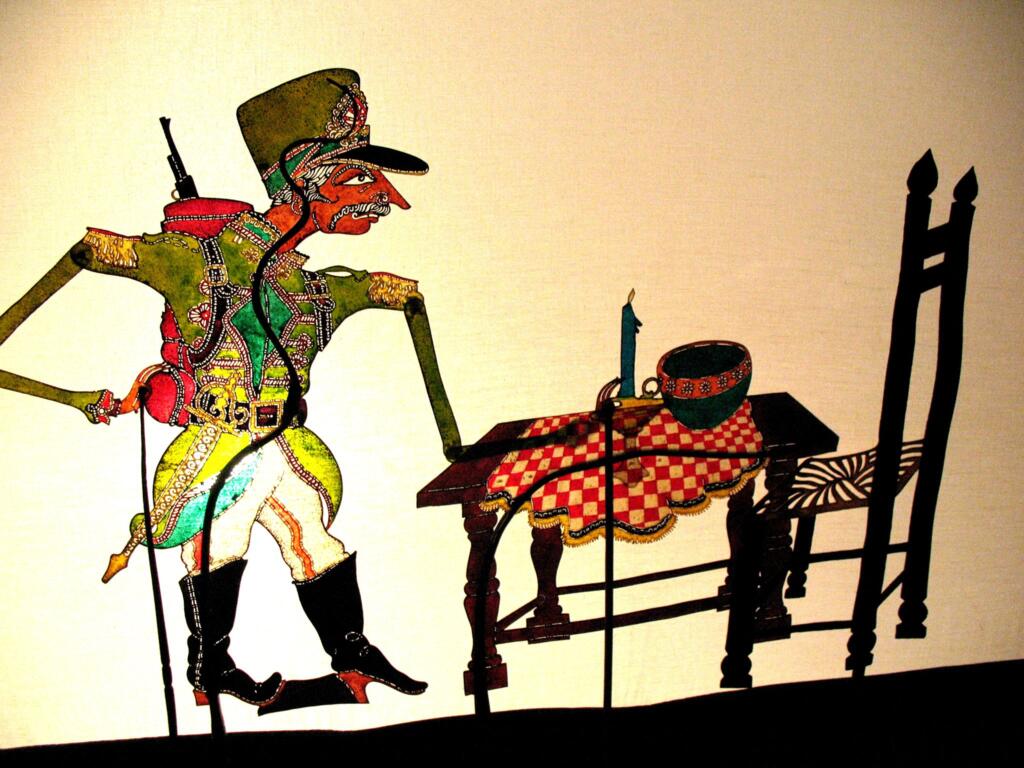
How popular is shadow puppetry in the USA? Is there a future and audience for this art form there?
It does not please me to tell you that performing arts in general have entered a crisis period in the United States at this time that has nothing to do with COVID. Nothing makes me sadder than meeting young artists who ask me about my career and what I was able to do in it, hoping to do this work, knowing that all the money that was there when I was their age has been cut. Times inevitably change, and some people have responded to those changes by trying to make a commodity out of culture. From what I’ve seen, there are winners and losers with that approach. My personal view is that we need to see culture differently. That it is part of who we are as people, and cannot be measured by sales or lack of sales. Recognising this, I hope we are globally on the edge of reasserting the significance of culture within our schools and communities.
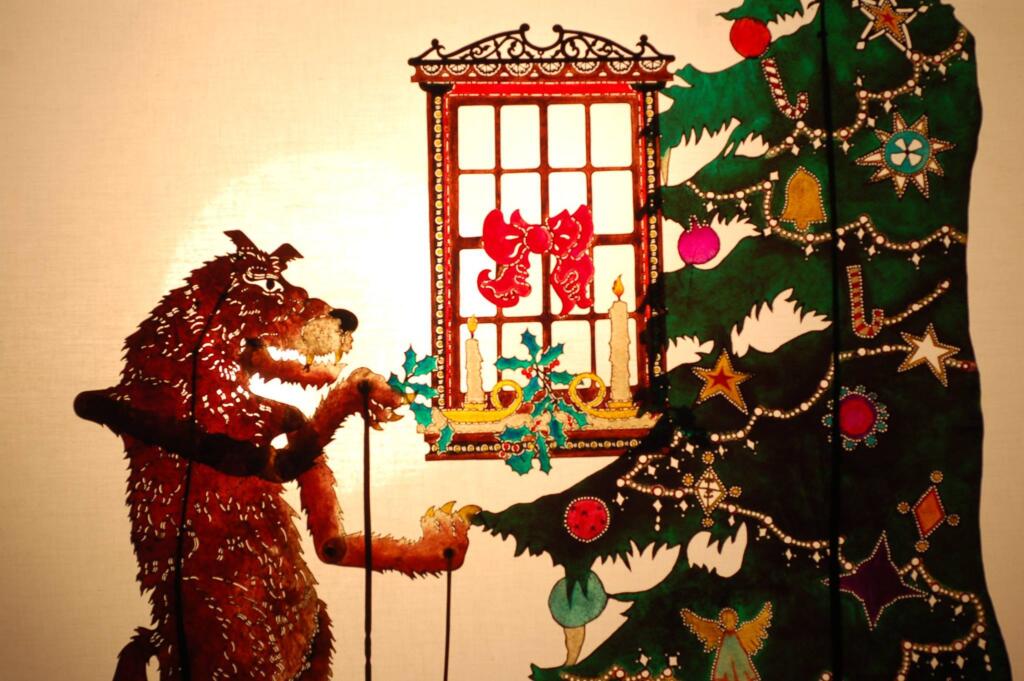
You have also experimented with different techniques and surfaces when it comes to intaglio printmaking. Could you elaborate on the appeal of this art form?
Intaglio printmaking has been my primary artistic discipline most of my life. I love it because I see it as an unrivaled medium for drawing, with the added bonus that one can make more than one print from a given plate. Making an intaglio plate is like creating a shallow copper or steel sculpture that has this miraculous transformation via a press and ink into an image. That plate can be reworked and refined until it reveals an extraordinary image. For many years, I never showed or sold my prints , keeping my practice private as what I called my intellectual playground. Drawing for me is a kind of revelatory process, where ideas floating around in my conscious and sub-conscious mind are called forth into images that explain my ideas to myself. That intaglio printmaking takes time to complete works aids in this meditative process. I surprise myself sometimes at what gets revealed. I began showing my work about five years ago.
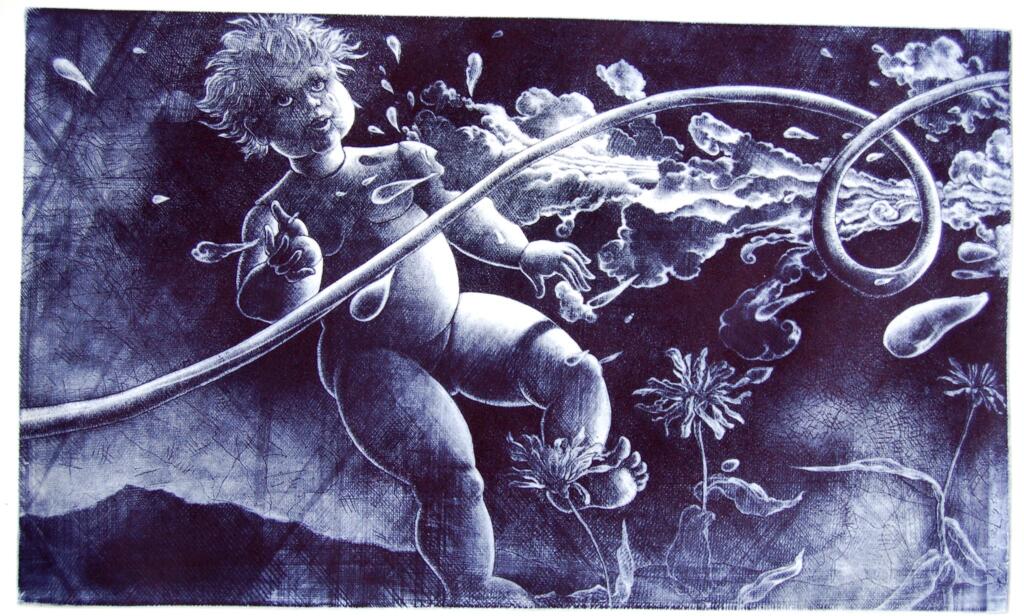
Could you tell us a little bit more about your recent kalamkari project with local artisans in Hyderabad?
With the support of the Fulbright program, I was given an opportunity to come back to India , and begin a new project which explores making new, non-traditional kalamkaris as works of art. Sponsored in 2018 by the Jawaharlal Nehru Architecture and Fine Art University in Hyderabad, I spent two months learning about kalamkari basics, with a particular focus on line and drawing. I was able to spend several weeks in Srikalahasti, observing Mr Thilak Reddy, who graciously taught me about kalamkari methods and the kinds of textiles he’s been making.
I see kalamkari as way to work with my other drawings. Using ideas like layering drawings on the fabric, tracing drawings on cotton with hard pencil with a light fixture, using a steel pen instead of a kalam, my studio work in the USA has been about finding the best way to draw on cloth. How to collaborate is still a question in front of me. When I returned to the USA after Hyderabad, I spent about a year in my studio , first figuring out how to get my images onto the fabric accurately and with materials available in this country, and beginning 12 large kalamkari pieces. With luck, I will find my way back to India and pick up from before.
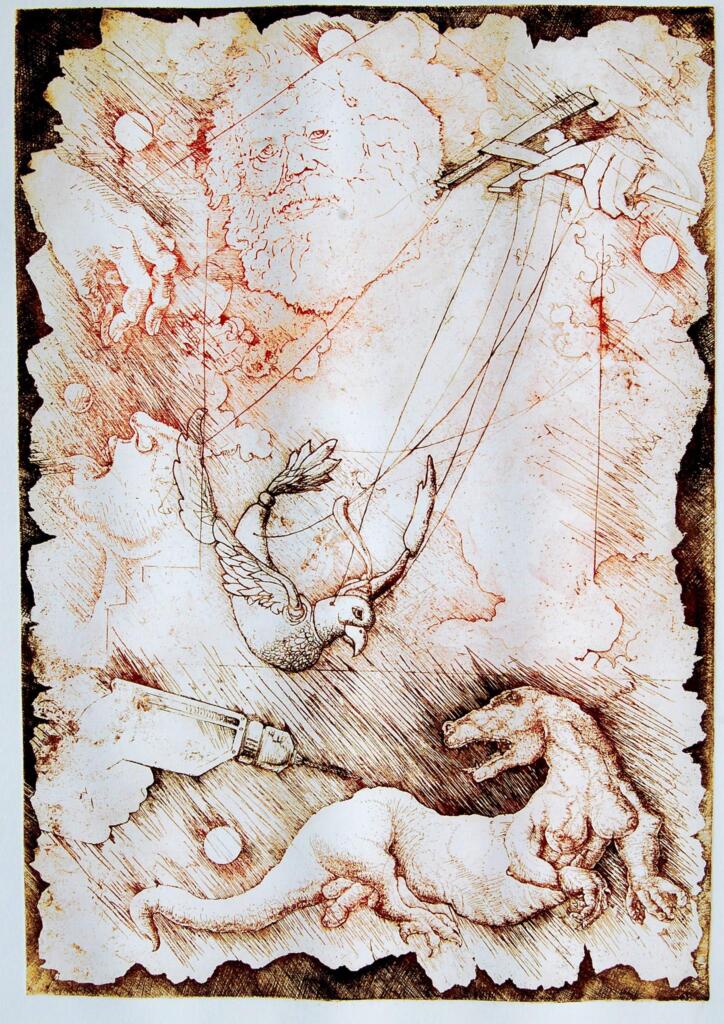
Wayang theatre, intaglio printmaking and kalamkari – do you use different mediums to explore different themes?
Absolutely. Besides the fundamental connection to drawing, I am also deeply attracted to the historical depth and evolved techniques of traditional forms, as well as their rich legacy for inspiration. It does not seem possible for me to make any piece of art that does not relate to some kind of story. I’ve tried making abstract pieces at times but my addiction to the narrative is inescapable, and I stopped trying to suppress my natural instinct to talk about something. I retired from puppetry, as being a puppeteer is a very physical activity that I am now a bit too ripe to pursue. Different mediums do indeed cause me to “say” different things. Colour, for example, has not been a major player in my intaglio work while it was one of the most important aspects of my shadow puppet works. The kalamkari project I see as being somewhere in between those two other forms, aesthetically.
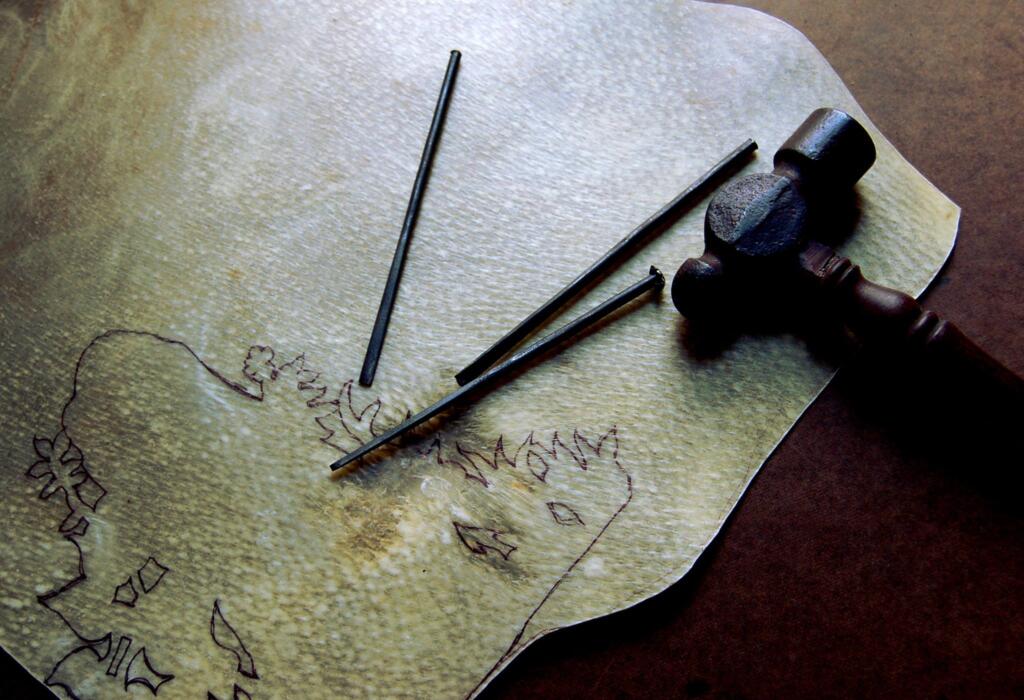
Why do you think art is worth investing in and what role does it play in society? And why do you think certain art forms are considered more “essential” than others?
As a society we invest in art because it inspires the best potential of human beings, as it illuminates our discourse about our times. As an individual, [you should] invest in it because artists like me need to eat, and you might wind up with something celebrated, rare and valuable in the process.
To the question about essential art, it is my personal trip to consider drawing to be the most essential of all art skills, because it demands that a person be able to communicate visually. In Victorian times, it was considered absolutely ordinary that every child or adult had basic drawing skills, no more special than being able to spell or read. I am fascinated by the idea that our minds are expanded through the challenges we subject them to.
As an art educator, I know how important exposure to art experiences can be, as it affects the individual and the greater society. From my life perspective, I see art making as problem solving; visualisation, the cultivation of understanding of how things connect to each other, and other higher order thinking skills that are indirectly if not directly applicable to other kinds of work. When that process is described as design instead of art, I think it better describes its usefulness and importance.
All the above images are courtesy Michael Richardson, Red String Wayang Theatre and Red String Intaglio Press



